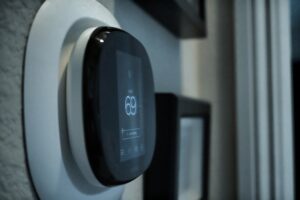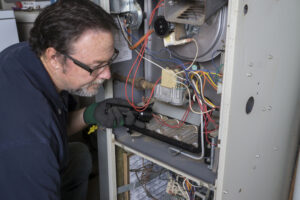5 Indoor Pollutants That You May Have in Your Home
When you think of air pollution, you probably think about the smog found outdoors in big cities. However, what you may not realize is that the quality of the air you breathe in your Hillsborough, North Carolina, home could be even worse than anything you expose yourself to outside. Indoor air quality is a growing problem in both commercial and residential properties. Many people don’t realize what pollutants impact air quality.
Asbestos
Asbestos includes a group of mineral types found naturally in places around the world. It was often used in building materials, such as roof shingles, ceiling tiles, floor tiles, siding, insulation and joint compound applied on the seams of sheetrock. However, in 1971, the U.S. Environmental Protection Agency declared the material unsafe because it can cause air pollution. It’s important to note that asbestos is generally safe when it’s intact, but disturbing the material is what causes indoor air quality concerns.
Long-term exposure to asbestos can lead to lung cancer and other concerning disorders. If your home was built before the EPA deemed asbestos unsafe, you may be exposed to this material, especially if you undergo any home renovations that would disturb the fibers. It’s important to only have a trained professional remove asbestos, as the process involves wearing a hazmat suit and appropriate protective gear.
Volatile Organic Compounds
Volatile organic compounds, also called VOCs, are gases emitted from certain liquids or solids. Some of the products you’re using in your home could be emitting VOCs without you realizing it. Examples include paints, waxes, varnishes, cleaning products, glue adhesives and products used to remove grease. Concentrations of VOCs are substantially higher indoors than outdoors because the air re-circulates through the HVAC system.
To limit exposure to VOCs, switch to natural cleaning products that don’t contain potentially harmful chemicals. If you must use heavy-duty products to clean or disinfect, do so in a well-ventilated area.
Smoke
Smoke is harmful to your health, even if you’re breathing it in secondhand. If anyone in your home uses tobacco products in or near the house, your indoor air quality could be compromised by the presence of thousands of chemicals found in tobacco smoke. These chemicals will circulate through your HVAC system, causing odors that are difficult to eliminate. Secondhand smoke exposure can also cause irritation of the eyes, throat and nose as well as potential long-term issues like lung cancer, pneumonia and asthma attacks.
Make sure smoke stays outside by never allowing people to smoke within your home. If you’re trying to remove tobacco chemicals and smoke from the space, consider using a whole-home purifier that can eliminate up to 99 percent of toxins and contaminants.
Carbon Monoxide
One of the most dangerous gases that you can find in your home is carbon monoxide. People call this odorless gas the silent killer because its effects can be fatal. Fossil fuels produce it when they don’t properly combust, so it can come from your HVAC system if something isn’t working correctly. When exposed to it, your body cannot use the oxygen it needs. As a result, you might feel symptoms like headaches, dizziness, increased heart rate, nausea, confusion and exhaustion. Make sure you have functional carbon monoxide detectors in your home.
Microbial Growth
Biological growth can occur indoors and outdoors, and it typically pops up where there’s moisture. If you’ve had a water leak or your home is especially humid, this growth can start to spread in dark, undisturbed places, such as basements, attics, crawlspaces and behind walls.
Exposure to microbial growth can trigger allergic reactions. Symptoms can include congestion, eye irritation, coughing, skin irritation, or headaches. It’s also concerning for those with asthma. Make sure to have your air ducts professionally cleaned on a regular basis to remove any growth or other bacteria that could be trapped within them.
Do you want more information on indoor air quality solutions that can help you breathe easier? Contact us at Warren-Hay Mechanical by calling 919-251-5615.
Image provided by Shutterstock
You May Also Like

Reasons to Replace Your Manual Thermostat in Hillsborough, NC
If you live in Hillsborough, NC, and still use a manual thermostat, you’re missing out on a lot. Upgrading to a programmable… Continue Reading Reasons to Replace Your Manual Thermostat in Hillsborough, NC…

Is It Time for a Commercial HVAC Replacement in Durham, NC?
As a business owner in Durham, NC, maintaining a comfortable and efficient workspace is vital for productivity. However, there comes a time… Continue Reading Is It Time for a Commercial HVAC Replacement in Durham, NC?…

Do You Desperately Need a Heating Repair in Carrboro, NC?
Nestled in the heart of North Carolina, Carrboro is no stranger to chilly winter days and nights. For homeowners in this vibrant… Continue Reading Do You Desperately Need a Heating Repair in Carrboro, NC?…
